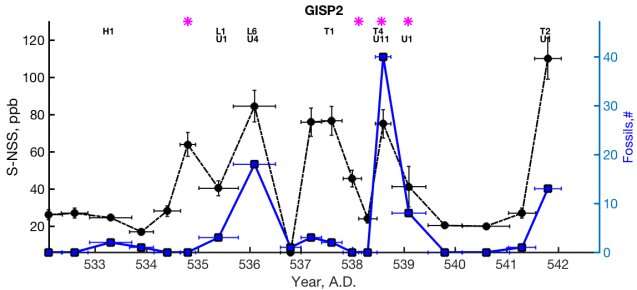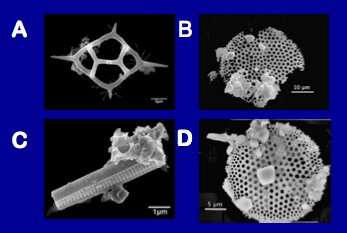Undersea volcanism may explain medieval year of darkness

Starting in 536 A.D., the sky went dark for more than a year. In some parts of Europe and Asia, the sun only shone for about four hours a day, and "accounts say the sun gave no more light than the moon," says Dallas Abbott, who studies paleoclimate and extraterrestrial impacts at Columbia University's Lamont-Doherty Earth Observatory.
The mysterious dimming of the sun brought on global cooling, famines, and civil upheavals; the Chinese reported eclipses that still can't be explained today. Naturally, "people thought it was the end of the world," says Abbott
The world didn't end then, of course, but this period of intense dimming and cooling was the start of a longer period of upheaval. Trees struggled to grow from 536 to 555 A.D., suggesting that the solar dimming was extensive, and scholars don't know exactly why.
Last week, in a poster at the meeting of the American Geophysical Union, Abbott and her colleague John Barron from the U.S. Geological Survey presented a new interpretation of the event. Their analysis of a Greenland ice core points to underwater eruptions that carried sediments and marine microorganisms into the atmosphere, where they helped to dim the sunlight.
Volcanic eruptions have been known spew sulfur and other particles into the atmosphere that can block out sunlight. But geological records only indicate big eruptions in 536 and 541, which aren't enough to explain the nine-year downward spike in tree growth. In addition, it would require a lot of sulfur and ash to darken the sky so much, and some of that material should be visible in rock layers and ice cores. However, says Abbott, "the amount of sulfate that was deposited wasn't as much as in other eruptions where they experience a similar amount of dimming."
That led her and Barron to suspect that perhaps impacts from space rocks could have thrown up enough dust to cause the dimming. But now, after analyzing a Greenland ice core, they have another theory.
From an ice core named GISP2, the scientists carefully analyzed ice layers laid down between 532 and 542 A.D. They measured the chemistry of the meltwater, and extracted microscopic fossils to study them under a microscope.

Surprisingly, the layers of the ice core contained 91 fossils of microscopic species that would have lived in warm, tropical waters. "We found by far the most low-latitude microfossils that anybody's ever found in an ice core," says Abbott. By comparison, they were only able to identify one high-latitude species in the mix.
How did all those warmth-loving tropical and subtropical species get all the way up onto the Greenland ice sheet?
The team suspects they were blown into the atmosphere by underwater volcanic eruptions near the equator. Rather than emitting lots of sulfur, these submarine eruptions (in approximately 536 and 538 A.D.) would have vaporized seawater, the rising steam carrying calcium-laden sediments and microscopic sea creatures into the atmosphere. After floating around the atmosphere for a while, some of these particles would have eventually settled in the Arctic.
Equatorial volcanic eruptions in particular can affect the entire globe and, once in the atmosphere, the white sediments and microorganisms would have been very good at reflecting sunlight back into space. They're also difficult to detect in sediment records, which explains why they hadn't been noticed before.
There is still a slight possibility that space rocks striking near the equator could have thrown the sediments and microfossils into the air, but the ice core chemistry and lack of cosmic dust in the layers makes this hypothesis less likely. "If there were impact events, they would have to be relatively small," says Abbott.
Next, she and her team would like to analyze another Greenland ice core to see whether they can replicate these surprising results.
SEE
https://plawiuk.blogspot.com/search?q=GLOBAL+WARMING
https://plawiuk.blogspot.com/search?q=LITTLE+ICE+AGE
No comments:
Post a Comment